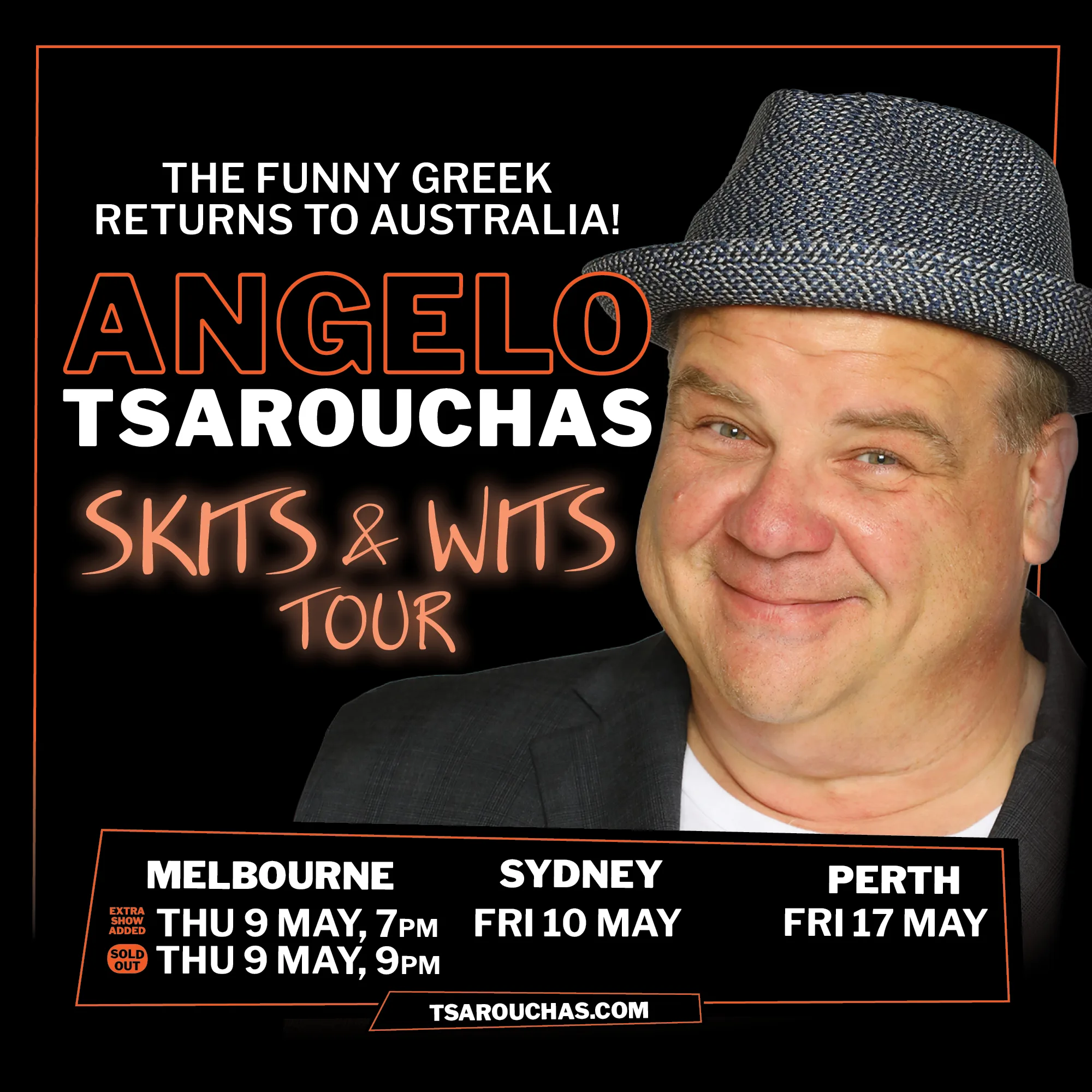By Mary Sinanidis.
Alexander McQueen said, “I want people to be afraid of the women I dress.”
He kept that promise through collections featured at the National Gallery of Victoria’s (NGV) latest exhibition titled Alexander McQueen: Mind, Mythos, Muse.
The Greek-inspired title gives a taste of the Hellenic ideals discreetly netted between threads of McQueen’s philosophy of fashion – and life.
NGV curator Danielle Whitfield told The Greek Herald she is sure people of many cultures, and not just those of Greek background, would be able to identify with the display.
Ms Whitfield said the prolific fashion designer was a “complete sponge” who “would draw inspiration from everywhere – a nightclub and street, his travels to India, or it could be art from the 15th century.”
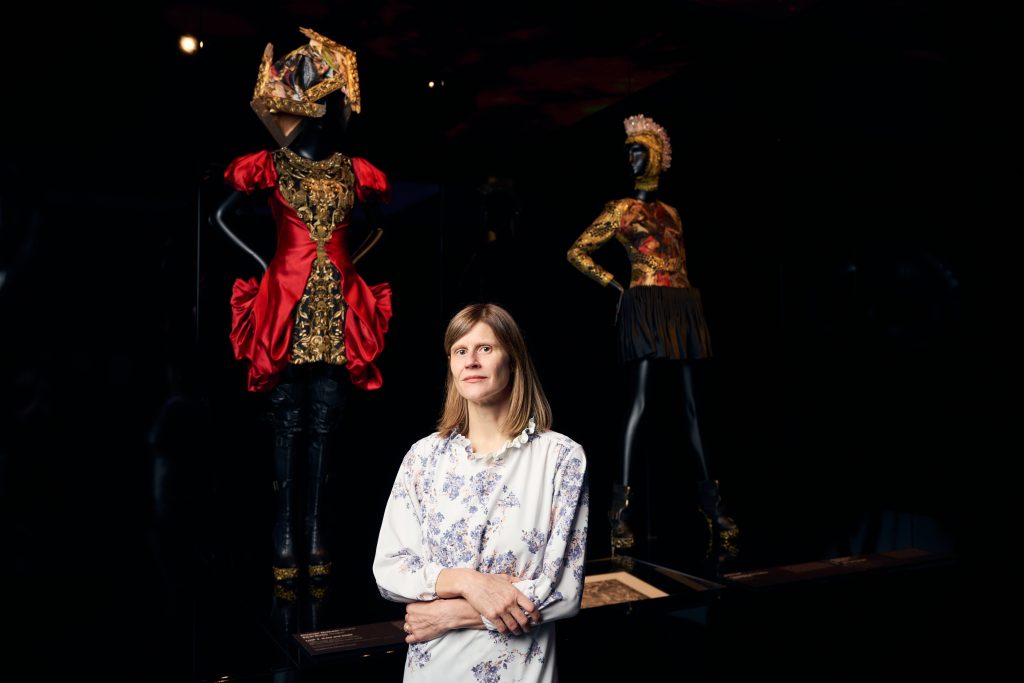
A strong period of globalisation in the mid-1990s was seen in McQueen’s work, and this global influence permeated the world of fashion.
“You’d see designers, and not just McQueen but also [John] Galliano [from Galliano, Givenchy and Dior], looking at other cultures and bringing this into practice. McQueen later identified as a Buddhist and had also spent time in India,” Ms Whitfield said.
Inspired by antiquity:
From a Greek perspective, Mind, Mythos, Muse includes fashion alluding to emancipated women of classical mythology with influences coming from fierce Amazon warriors, mystical figures from Byzantium and even arresting Grecian goddesses.
“There is no proof he ever visited Greece,” Ms Whitfield said.
“He lived in Paris and spent time in Italy [working with revolutionary Italian designer Romeo Gigli from February to November 1990], but I don’t know whether he had travelled to Greece. He was an avid reader, however.”
Regardless of lived experience, the Mind, Mythos, Muse display begins and ends with Hellenic inspiration. We are taken on a trek through classical notions of beauty permeating McQueen’s Neptune collection (spring 2006) with ancient Greek and Roman influences. Twisting and turning through thought-provoking fashion trends and displays, the exhibition ends with Plato’s Atlantis, McQueen’s final runway presentation referencing Plato’s legendary island which was swallowed by the sea.
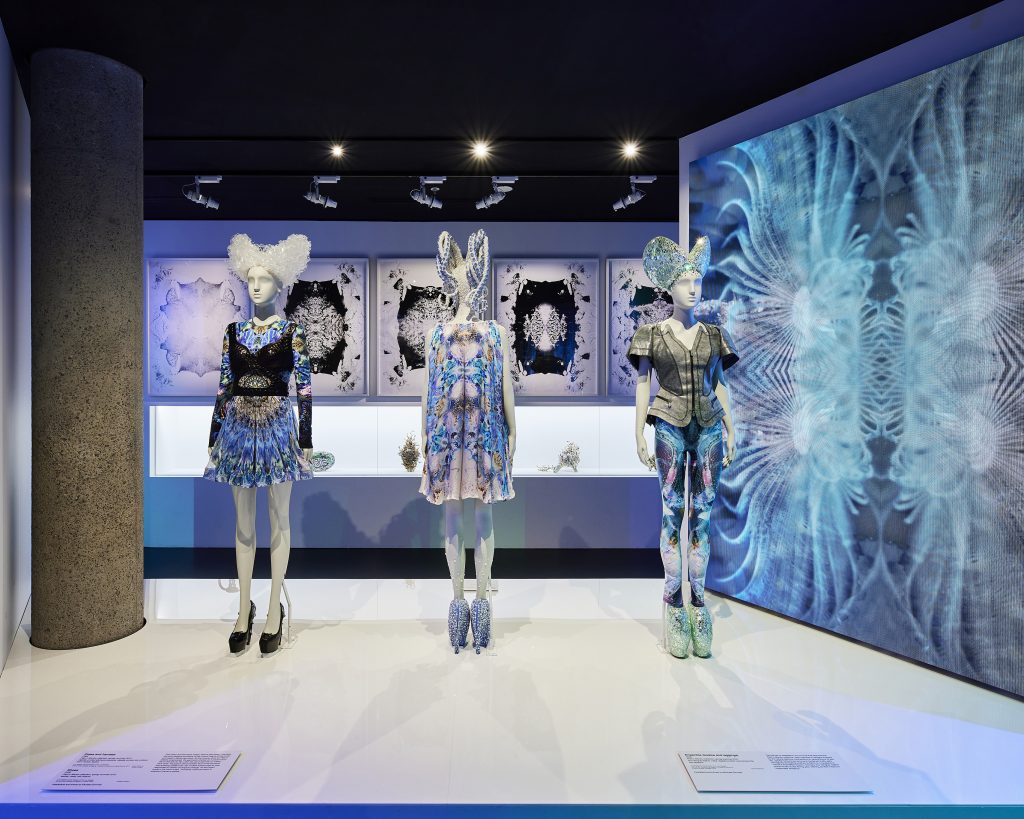
“Mythos [in the title of the display] recognises that Greco-Roman mythology was a source of inspiration for the Neptune collection, and at the other end, we have Plato’s Atlantis, while the Eye collection deep-dives into Ottoman Turkey. You see his use of motif from the Ottoman era in a way, and the cut of clothing in reference to traditions,” Ms Whitfield said, adding that his collections are built to be “multi-layered narratives, and never simplistic”.
Ms Whitfield also described how “in the Eye collection [referencing Middle Eastern culture] there’s a reverent fusion of different representations of Turkey,” but it is “less about Turkey than it is a history of colonisation.”
In Neptune’s collection, he interpreted how classical ideals inspire. When conjuring the sea god Neptune/Poseidon, McQueen married the turbulence and seduction of the oceans with a soundtrack featuring Missy Elliott, Aretha Franklin and Suzi Quatro and neoclassical motifs such as columns, sea horses and phoenixes.
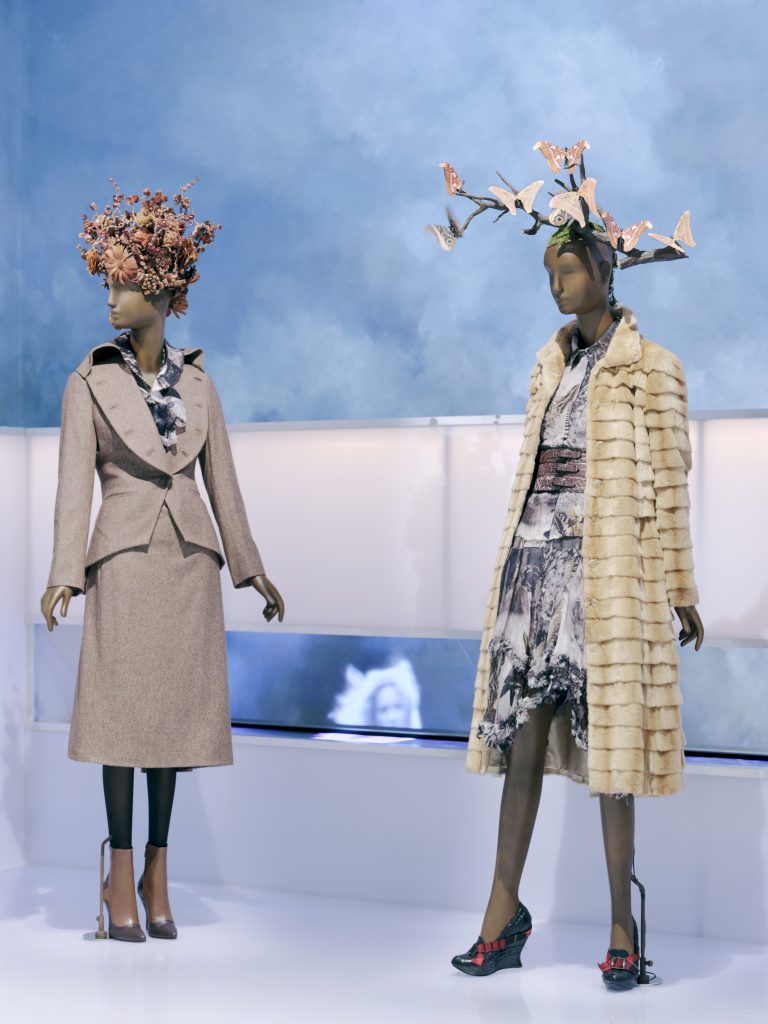
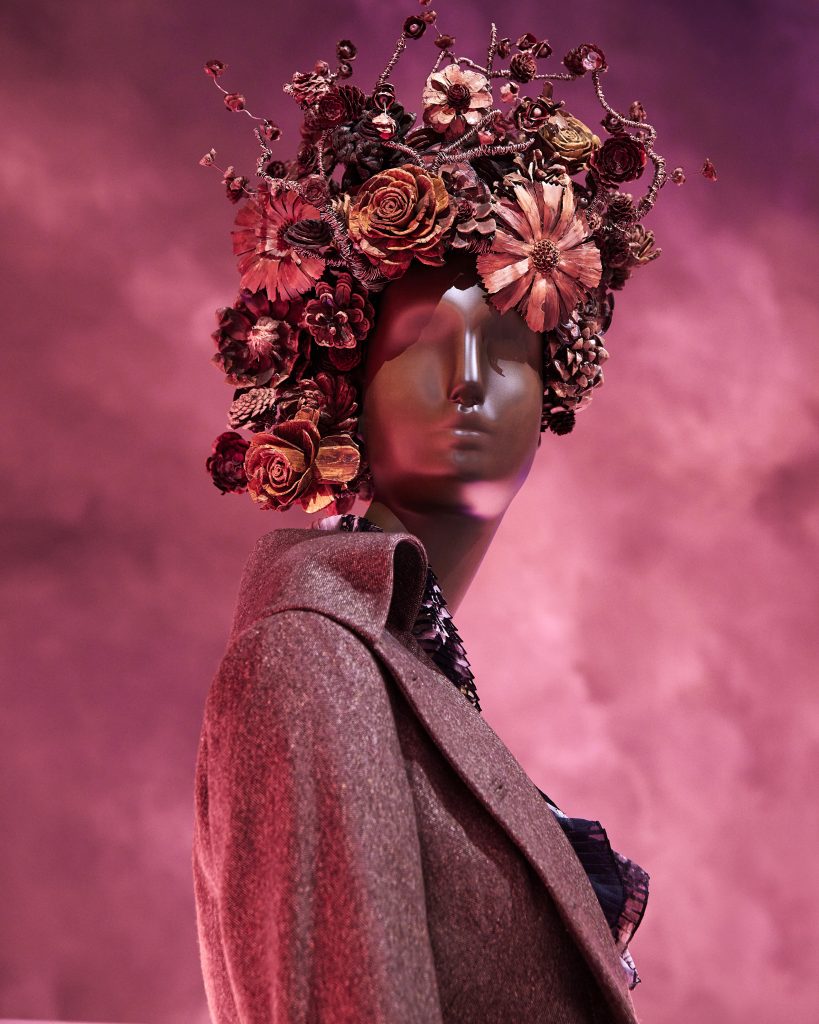
Plato’s Atlantis, widely acclaimed as his finest collection and a pivotal moment in fashion, merges Darwin’s theories of evolution with Plato’s philosophy while utilising cameras on giant robotic arms to move along the catwalk as an androgynous army of other-worldly human-animal-alien hybrid models strutted the runway on bizarre hooflike platforms.
It debuted in October 2009 as the first livestreamed fashion show. Though digital fashion has come a long way since then, there has never been another revolutionary milestone quite like Plato’s Atlantis.
“It’s a very powerful collection because at the heart of it is an issue facing humanity today, like climate change,” Ms Whitfield said. “He did it in a way that is powerful and emotional.”
Ms Whitfield paints a picture of McQueen’s studio filled with gigantic boards with pinned images like a National Geographic of creatures with scales and textures.
“And that would happen for all collections, and you’d sit there, and he would have music blaring, and you’d be immersed sonically and visually,” she said.
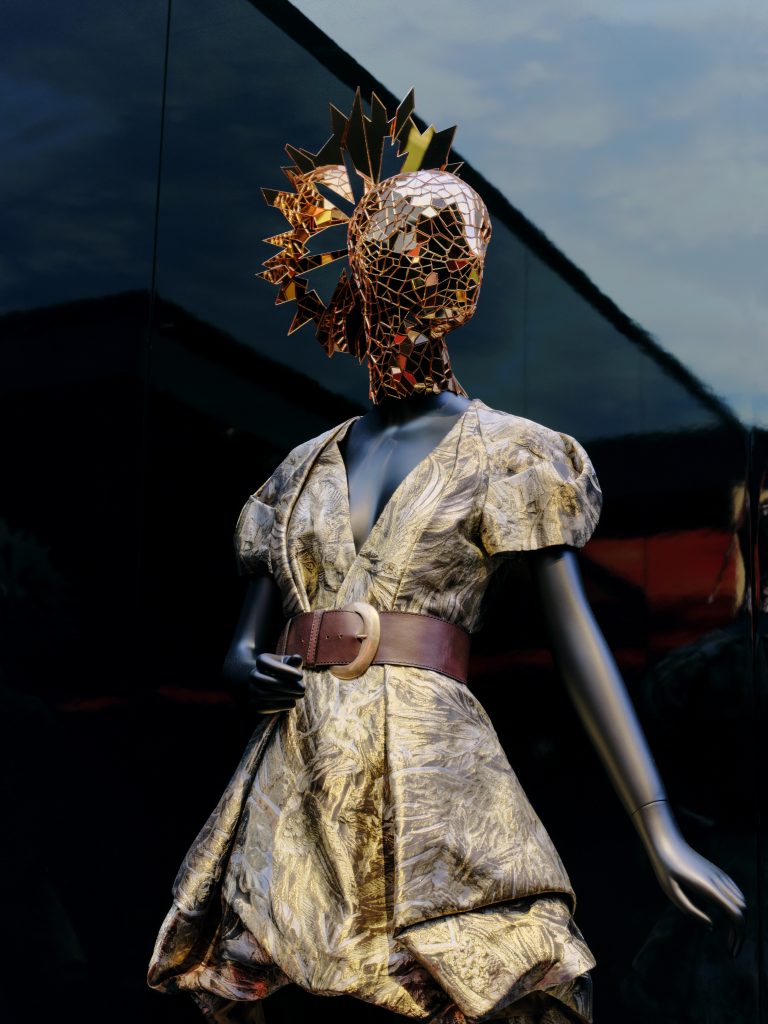
Vogue magazine described Plato’s Atlantis, his last runway, as “one of the most unforgiving platitudes: Hindsight is 20/20.” It was also McQueen’s swan song before he took his life in February 2010 after struggling with depression following the death of his mum Joyce a month earlier. It had been Joyce, his greatest supporter, who had always believed “Lee was different.”
Kleos and McQueen’s legacy
Dr Paul Knapman, the Westminster coroner who recorded the verdict of suicide following McQueen’s hanging, said: “It’s such a pity for a man who, from a modest start, climbed to the top of his profession only to die in such tragedy.”
The East Londoner, who grew up on an estate as the youngest of six siblings, managed to rise to the finest houses of couture influencing fashion forevermore and collaborating with the likes of Givenchy (1996-2001) and Gucci [to whom he sold his fashion house in 2000]. He fuelled imaginations as “the hooligan of fashion,” creating emotive shows which broke rules but kept tradition, changing the way people viewed the fashion industry.
He had said: “When I’m dead and gone, people will know that the 21st century was started by Alexander McQueen.”
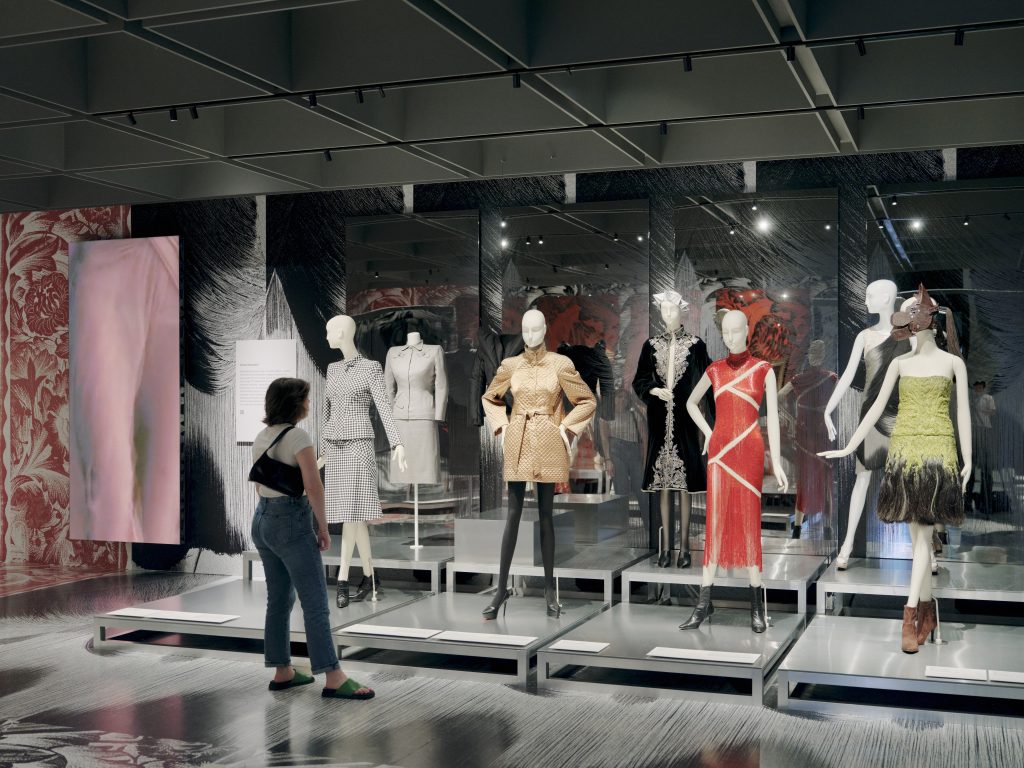
It’s hard to know whether McQueen had studied Homeric notions of kleos, the Greek philosophy of posthumous glory after a life of heroic deeds. He did, however, carefully consider his posthumous reputation, steadily forging a legacy to influence the way he would be remembered.
One last untitled exhibition, the fall/winter 2011 collection, came to be known as ‘Angels and Demons’ inspired by iconography, Icarus wings, and Hieronymos Bosch’s demons implanted on jackets and draped dresses. It leaves a lingering taste of what more could have, should have been achieved. The first room of the display begins with this posthumous collection which McQueen was working on when he died.
From rags to riches
Born in 1969, Lee McQueen came to be known by his middle name of Alexander, following the suggestion of eccentric magazine editor/fashion stylist Isabella “Issie” Blow, who thought it would resonate better with the fashion world at the launching of his career. It was also a way for him to keep his unemployment benefits while still struggling as a fledging designer.
Much like his warrior namesake, Alexander the Great, who conquered the known world in his time, Alexander McQueen staged a blitzkrieg in the fashion world with every emotive show extending beyond the realms of fashion, performance and art.
Ms Whitfield said NGV visitors who may not know that much about McQueen’s fashion, beyond the fact that Kate Middleton’s wedding dress bore his label, are struck by the “scope and depth” of the display.
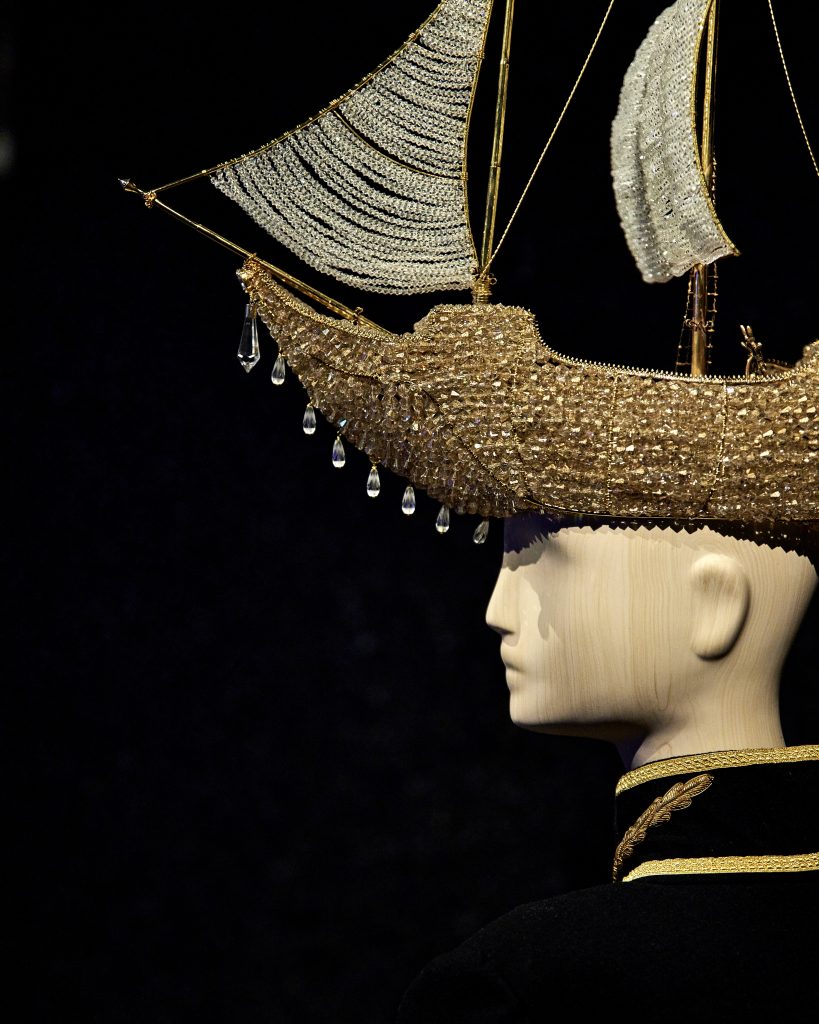
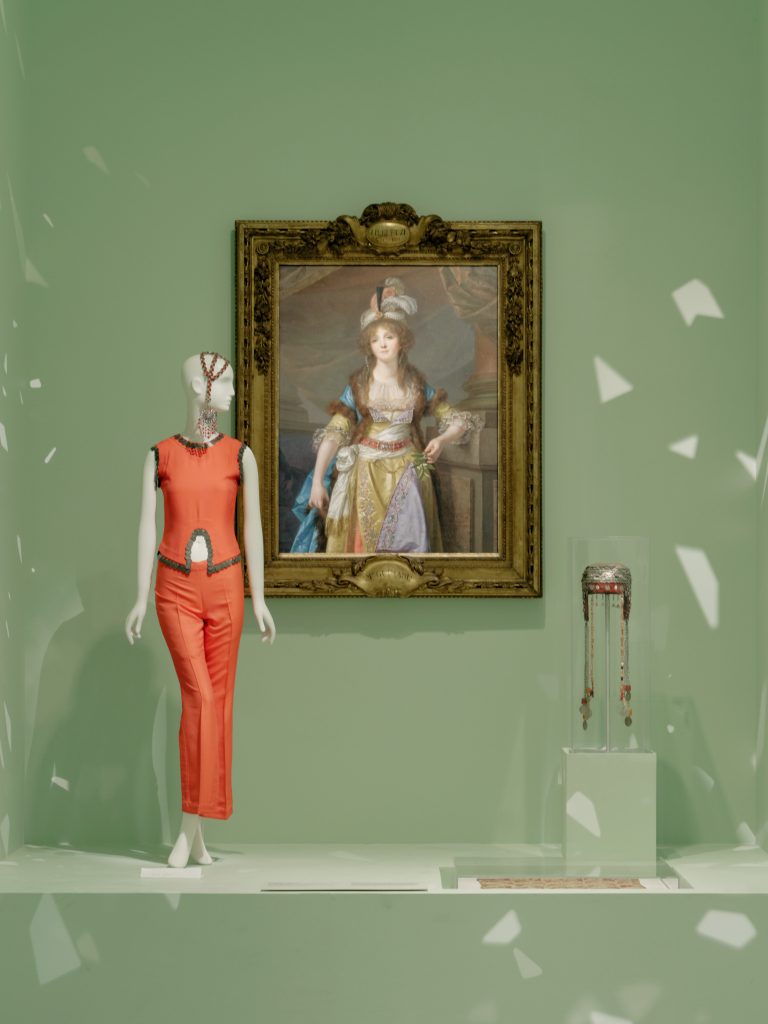
“They think of that Scottish and gothic designer, but are surprised to see there is a delicacy, lightness and incredible range. There are just some people who have an extraordinary capacity for great breadth, people like Mariah Carey and her range of five octaves. In fashion, McQueen has artworks which conceptualise what he is trying to say,” Ms Whitfield said.
“He was a designer, who is an artist, who thinks deeply about culture, society and tackling difficult topics. He is very brave.”
In his own words, “you never move forward if you want to play it safe”.
The “Mind, Mythos, Muse” exhibition was first conceived by the Los Angeles County Museum of Art, embracing fashion as art. It showcases more than 120 garments and accessories paired with inspiration behind them to help illuminate the interdisciplinary impulse that defined his career. The works are drawn from the collections of the NGV and the Los Angeles County Museum of Art and are paired with photographs, photographs, music and movies which inspired them. The NGV is at 180 St Kilda Road Melbourne, and the display runs through to 16 April 2023.



